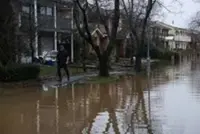Noor Hidayah (left) and family members cleaning some of the clothes from their flood-stricken house in Batu Pahat.
Evacuees in Segamat, Batu Pahat and Muar say set-ups have improved despite some horror stories
OVER the past few weeks, Johor has been in the media spotlight after experiencing one of the worst floods in 17 years.
Already a subscriber? Log in
Save 30% OFF The Star Digital Access
Cancel anytime. Ad-free. Unlimited access with perks.





